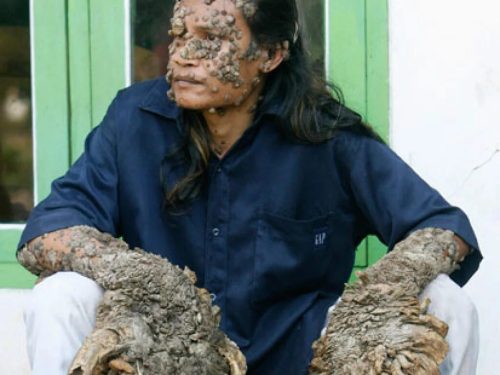
In the annals of human evolution, there exists a fascinating enigma: an individual with hands that bore an uncanny resemblance to those of the mighty dinosaurs that once roamed the Earth. This mysterious figure, preserved in the fossil record, provides a unique window into the evolutionary history of our species. In this article, we embark on a journey to explore the intriguing story of this enigmatic individual and the significance of their ancient dinosaur-like hands.
I. Unearthing the Fossil Evidence
The story begins deep within the layers of Earth’s crust, where paleontologists and archaeologists have made remarkable discoveries over the years. Fossils of early hominids with hand structures reminiscent of dinosaurs have been found in various regions, shedding light on our evolutionary past.
These fossils tell us that there was a time when our distant ancestors possessed hands that, in some ways, resembled the grasping appendages of the dinosaurs. The details of these discoveries provide vital clues about the evolutionary forces that shaped our species.
II. Evolutionary Significance
One of the most compelling aspects of this enigmatic individual is the evolutionary significance of their unique hand structure. The presence of dinosaur-like hands in early hominids challenges our understanding of the trajectory of human evolution.

Adaptations for Tool Use
The similarities between these ancient hands and those of dinosaurs raise questions about their functional purpose. Some researchers suggest that these adaptations could have been advantageous for tool use, as they would have allowed for a more robust grip and greater dexterity when crafting tools and weapons.
Implications for Bipedalism
The emergence of dinosaur-like hands in early hominids also invites speculation about their role in the evolution of bipedalism. While it’s clear that our species developed an upright, bipedal gait, the coexistence of these unique hand features raises intriguing questions about the interconnectedness of locomotion and hand morphology in our evolutionary history.
III. Genetic Insights
To unravel the mystery further, genetic studies are underway to understand the underlying genes responsible for these dinosaurian hand traits. These studies may provide valuable insights into the genetic basis of human evolution and the factors that drove the development of such unique adaptations.
IV. Cultural Implications
Beyond the realm of science, the enigmatic individual with ancient dinosaur-like hands has cultural significance. Cave paintings, carvings, and other artifacts bearing handprints resembling those of dinosaurs have been discovered, suggesting that these individuals were an integral part of early human communities.
These artistic depictions provide a glimpse into the cultural and symbolic significance of these individuals, raising questions about how they were perceived and integrated into their societies.

V. Preservation and Restoration
Preserving and restoring fossilized hands with dinosaurian features is a delicate process that requires a multidisciplinary approach. Experts in paleontology, archaeology, and anthropology collaborate to ensure the accurate reconstruction of these ancient hands, allowing us to study them in greater detail.
The enigmatic individual with ancient dinosaur-like hands presents us with a captivating puzzle, one that challenges our understanding of human evolution. As scientists continue to unearth fossil evidence, conduct genetic research, and explore the cultural implications of these findings, we inch closer to unraveling the mysteries of our evolutionary past.
In this quest for knowledge, we are reminded that the story of human evolution is far from complete, and there are still many enigmas waiting to be discovered beneath the Earth’s surface. The individual with ancient dinosaur-like hands stands as a testament to the rich tapestry of our evolutionary history, inviting us to delve deeper into the past to understand our present and future better.






